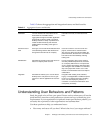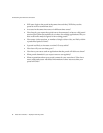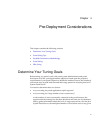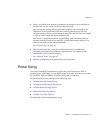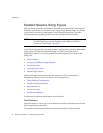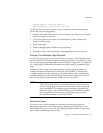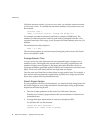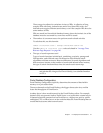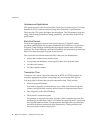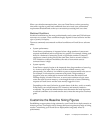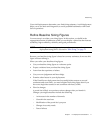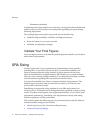Portal Sizing
66 Portal Server 6 2005Q1 • Deployment Planning Guide
Calculate maximum number of concurrent users after you calculate maximum number
of concurrent sessions. To calculate the maximum number of concurrent users, use
this formula:
concurrent users =
number of concurrent sessions / average time between hits
For example, consider an intranet Portal Server example of 50,000 users. The
number of connected sessions under its peak loads is estimated to be 80% of its
registered user base. On average, a user accesses the Portal Desktop once every 10
minutes.
The calculation for this example is:
40000 / 10 = 4000
The maximum number of concurrent users during the peak hours for this Portal
Server site should be 4,000.
Average Session Time
Average session time is the time between user login and logout averaged over a
number of users. The length of the session time is inversely proportional to the
number of logins occurring (that is, the longer the session duration, the fewer
logins per second are generated against Portal Server for the same concurrent users
base). Session time is the time between user login and user logout.
How the user uses Portal Server often affects average session time. For example, a
user session involving interactive applications typically has a longer session time
than a user session involving information only.
Search Engine Factors
If your portal site will offer a Search channel, you need to include sizing factors for
the Search Engine in your sizing calculations. Search Engine sizing requirements
depend on the following factors:
• The size of index partitions on the active list of the index directory
Partition size is directly proportional to the size and number of indexed and
searchable terms.
• Average disk space requirement of a resource description (RD)
To calculate this, use this formula:
average disk space requirement =
database size / number of RDs in database




